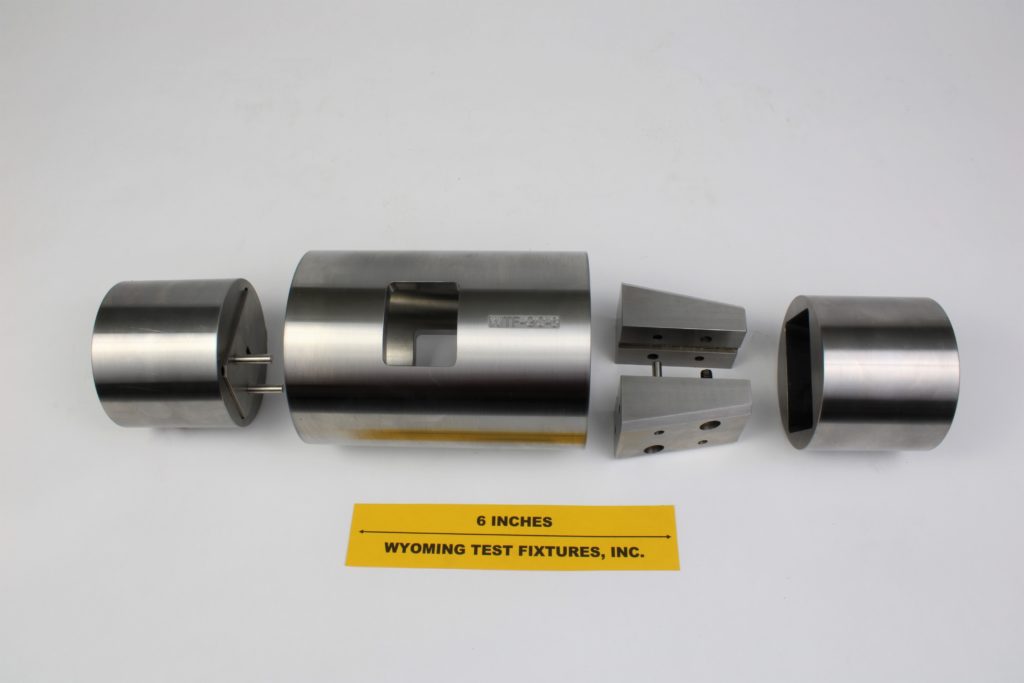German DIN 65 380 Modified Celanese Compression Test Fixture
Model No. WTF-GC (Stainless Steel)

Fig. 1: German DIN 65 380 Modified Celanese Compression Test Fixture components in alignment for assembly.
The compression test fixture defined in the German Standard DIN 65 380 (Reference 1) is another modification of the Celanese Compression Test Fixture design. Just as the Wyoming Modified Celanese compression test fixture, it also represents a design improvement.
As indicated in Fig. 1, the German Modified Celanese Compression Test Fixture incorporates tapered flat wedges, much like the IITRI fixture, eliminating the need for a precise specimen thickness.
The overall circular geometry of the Celanese fixture has been retained, which is very efficient in sustaining the high circumferential (hoop) stresses developed in the end blocks during a compression test. However, rather than converting to alignment rods in linear bearings as in the IITRI, Wyoming Modified IITRI and Wyoming Modified Celanese test fixtures, the external alignment sleeve of the standard Celanese fixture has been retained. Thus, binding of the sleeve during a test remains as a potential problem.
The German DIN 65 380 fixture is designed to test a specimen of the same width as the Celanese fixture, viz., only 6.35 mm (0.250") wide. A specimen length of 112 mm (4.41") is specified, with a gage length of 8 mm (0.315"). The specimen thickness in the tab regions is specified to be 4.13 mm (0.16").
As for the standard Celanese fixture, file faces are specified for the wedge grips. However, machined serrations or tungsten carbide particle grit faces can be supplied also.
Source of Additional Information:
1) DIN Standard 65 380, "Compression Test of Fiber Reinforced Aerospace Plastics: Testing of Unidirectional Laminates and Woven-Fabric Laminates," Deutsches Institut fur Normung, Koln, Germany, 1991.

